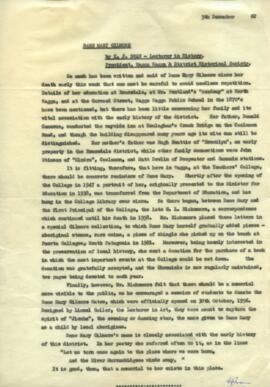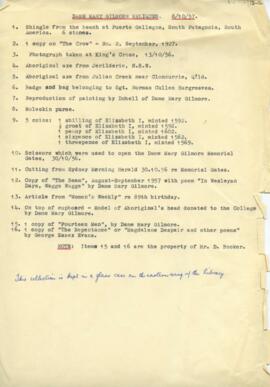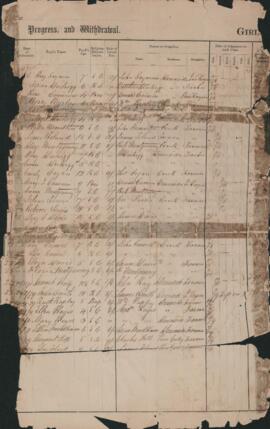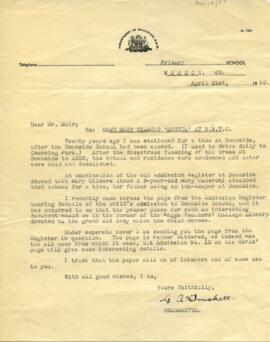Identity area
Reference code
Title
Date(s)
- 1950-1963 (Creation)
Level of description
Extent and medium
3 boxes
Context area
Name of creator
Biographical history
Mary Gilmore was born in 1865 near Goulburn, Australia, the eldest child of David Cameron and Mary Ann Beattie. Her father was a man of many trades, working as a farmer, carpenter, builder and innkeeper throughout his life, while her mother shared Mary’s literary passions, writing for both the ‘Australian Town and Country Journal’ and the ‘Daily Telegraph’. While the family lived in several areas around south-western NSW, Mary spent many of her formative years in Wagga Wagga. She was educated in several Wagga schools throughout her youth where she developed her deep love and appreciation for writing. Mary described learning to write as if “… the gates of the world had opened. I had wings. I could not help writing”. After completing her education, Mary was employed as a pupil-teacher at Wagga Wagga Public School. She continued to teach in and around Wagga for several years. Despite her many travels and adventures later in life, Mary maintained a deep appreciation for the nature and people in Wagga, which she often expressed through her poetry and writings.
In 1890, Mary moved to Sydney and began to teach at Neutral Bay Public School. While in the city, Mary became increasingly entrenched in the radical movements of her day. She became particularly invested in the New Australia movement led by William Lane, often writing for the New Australia Settlement Association’s journal. In 1895, Mary set sail for Cosme, the New Australia Colony in Paraguay, where she would continue to teach and write. It was here that she met and married her husband, William Gilmore. Mary gave birth to their only child, William Dysart Cameron Gilmore in 1898, near Cosme, Paraguay. However, Mary became increasingly unhappy at Cosme and she and her husband resigned from the colony in 1899. They continued to live and work and Paraguay for three years before eventually making their way back to Australia.
After arriving back in Australia, Mary continued to write, becoming increasingly involved in the literary community. She wrote for several bulletins and journals and published her first collection of poetry, ‘Marri’d and other Verses’, in 1910. Mary continued to publish poetry and prose over the next five decades, becoming particularly prolific throughout the Second World War. Mary also became increasingly involved in political activism. She was a champion for Aboriginal rights, industrial arbitration, prison reform, and freedom of the press and often discussed these causes in her poetry and other works. As a friend of her described, “one almost senses an invisible army behind Mary Gilmore when her sense of justice is aroused”. Both her literary works and her activism has made Mary Gilmore an important figure in Australian history. She is now commemorated in Australia by being featured on the ten-dollar bill.
Archival history
Content and structure area
Scope and content
Letters to George Blakemore, photocopies of letters to Phoebe Price, newspaper clippings and memorabilia, two photographs of Mary Gilmore and one of George Blakemore.
Accruals
System of arrangement
Conditions of access and use area
Conditions governing access
OPEN to public access.
Conditions governing reproduction
Items in this collection may be protected by copyright. Contact the Reference Archivist for more information.



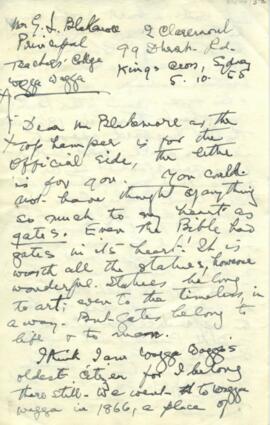
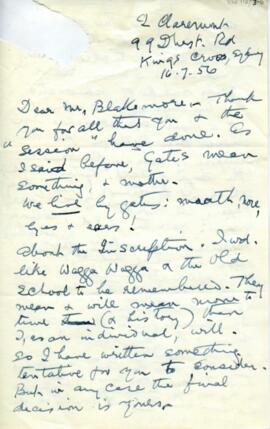


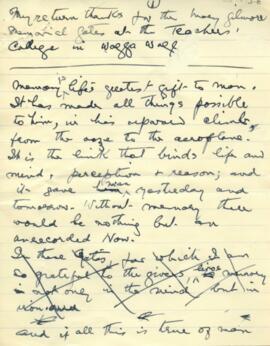
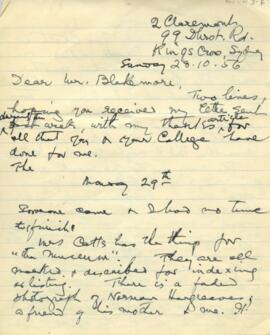
!["Column 8" [newspaper clipping]](/uploads/r/rw/3/c/3/3c3969662c6ab6824b9adad897644cfa108d648cd0ac38787335447f2b67dced/RW114-3g001_142.jpg)


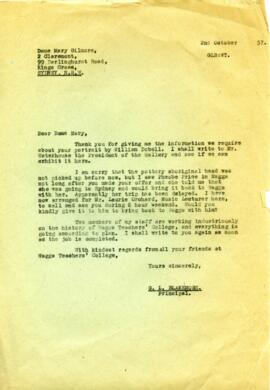
![Letter to the Editor, by Mary Gilmore [newspaper clipping]](/uploads/r/rw/c/d/e/cde538ae84bb348292e1ffcce771a8e83182d44e2d9eed21193556c62999cbc1/RW114-004_142.jpg)

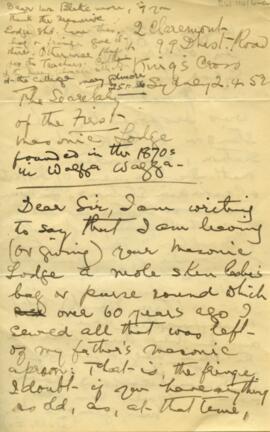
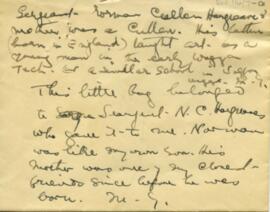

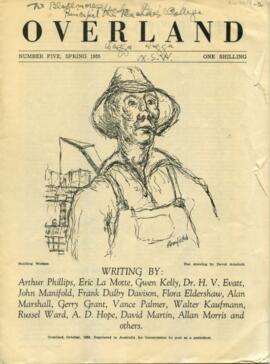
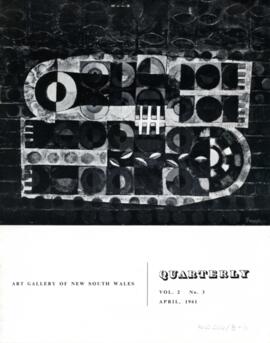
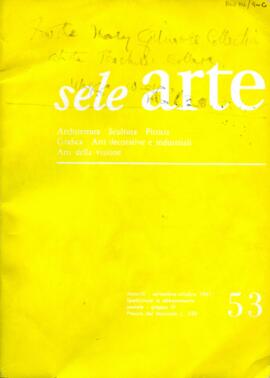
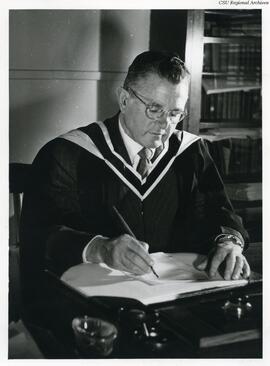
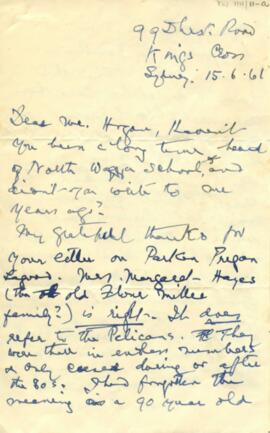
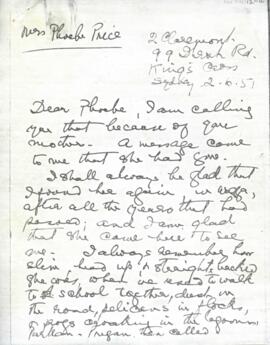
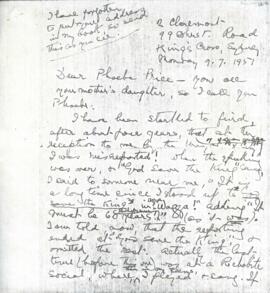
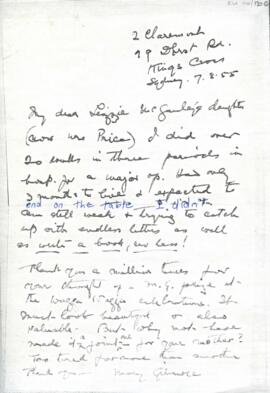

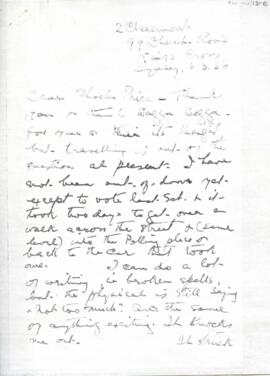

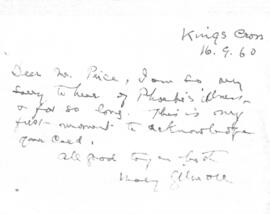
![Dame Mary Left £12,000 [newspaper clipping]](/uploads/r/rw/4/2/2/422b96d0d16d36f3ac66aa2abd1ae6f913bf1e717d59d2b3f2b4562e1e8645b8/RW114-12h001_142.jpg)
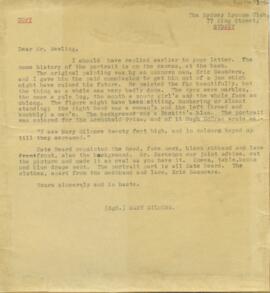
![Dame Mary Gilmore Nears 90th Birthday [newspaper clipping]](/uploads/r/rw/4/c/8/4c8c5edde15c9efb863e3a1cc7c13709cfd009f90abaacd4156714eb6477d26c/RW114-13b001_142.jpg)

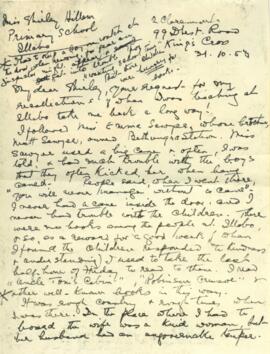
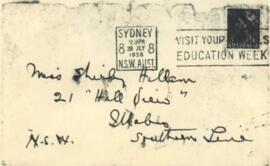

![Dame Mary Gilmore: Teacher, Reformer and Poet [newspaper clipping]](/uploads/r/rw/a/f/9/af9c08fbfeaeca3bfcbf563f0a665a3144f6d60e0324671220d818fced5948f5/RW114-17aTRUE_142.jpg)
